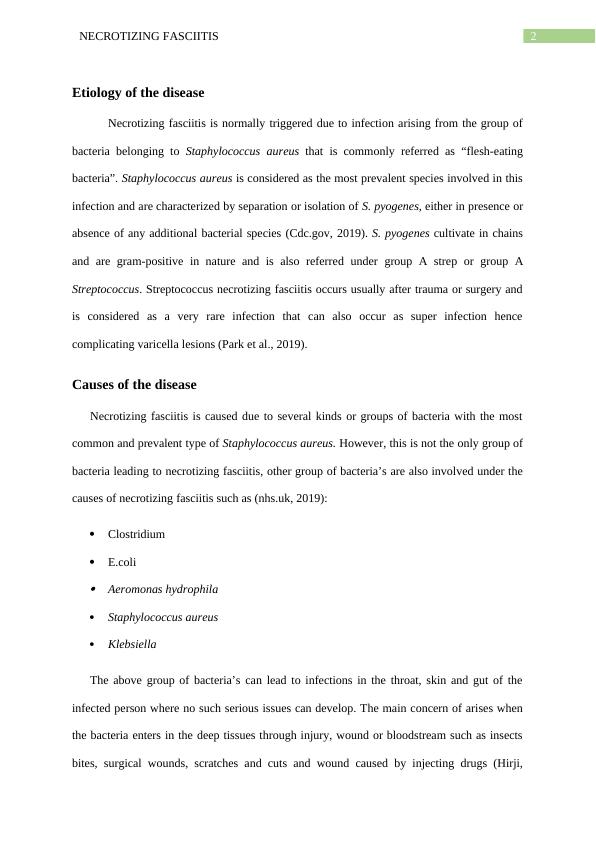Necrotizing Fasciitis: Causes, Symptoms, Diagnosis, and Treatment
9 Pages1959 Words35 Views
Added on 2023-01-17
About This Document
This essay provides an in-depth insight into necrotizing fasciitis, a rare bacterial infection commonly known as flesh-eating disease. It discusses the causes, symptoms, diagnosis, and treatment of the condition, as well as prevention strategies. Necrotizing fasciitis is a serious condition that can rapidly destroy tissue and requires early diagnosis and treatment.
Necrotizing Fasciitis: Causes, Symptoms, Diagnosis, and Treatment
Added on 2023-01-17
ShareRelated Documents
End of preview
Want to access all the pages? Upload your documents or become a member.
Pathophysiology and Treatment of Cellulitis
|7
|1683
|83
Necrotising Fasciitis: Causes, Epidemiology, and Clinical Features
|6
|1563
|84
Wound Management and Infection Control
|10
|2053
|78
NRSG 257 : Child, Adolescent and Family Nursing
|9
|2370
|117
Surgical Site Infection Prevention and Control
|20
|6053
|256
Effectiveness of Interventions to Prevent MRSA Infection in Hospital Settings
|9
|2602
|38



